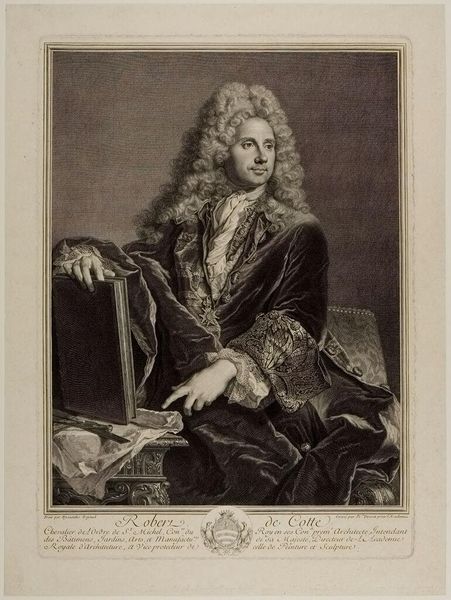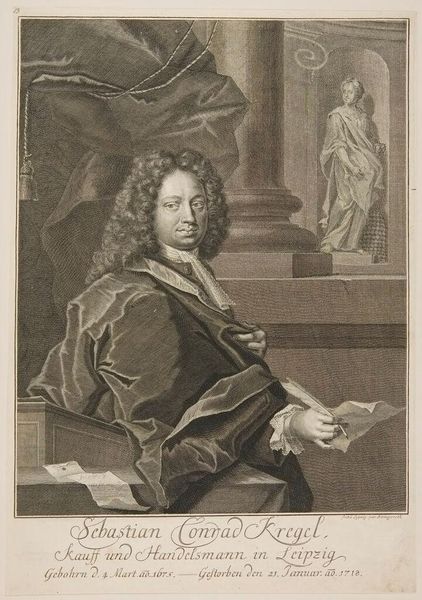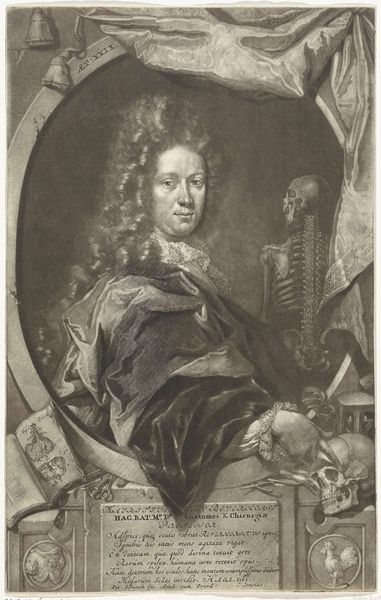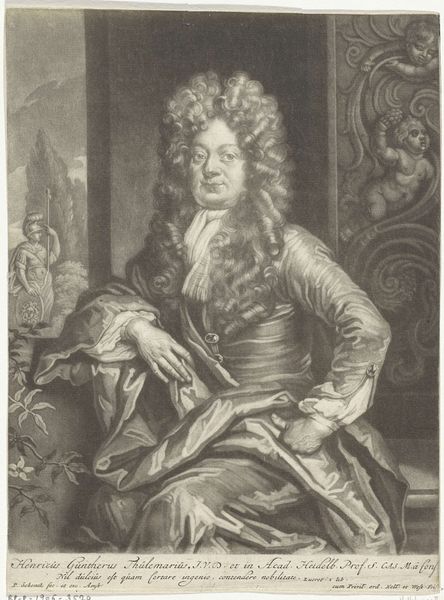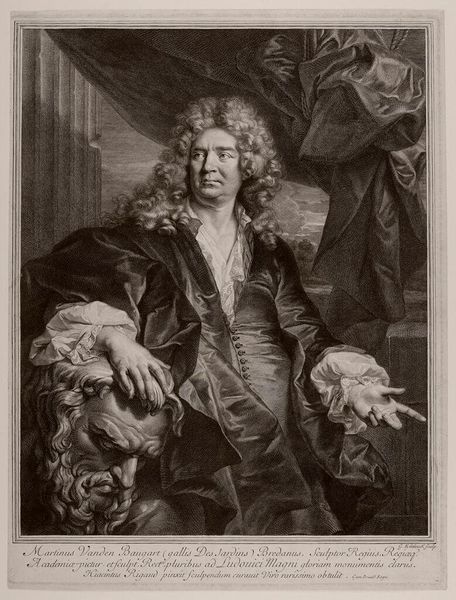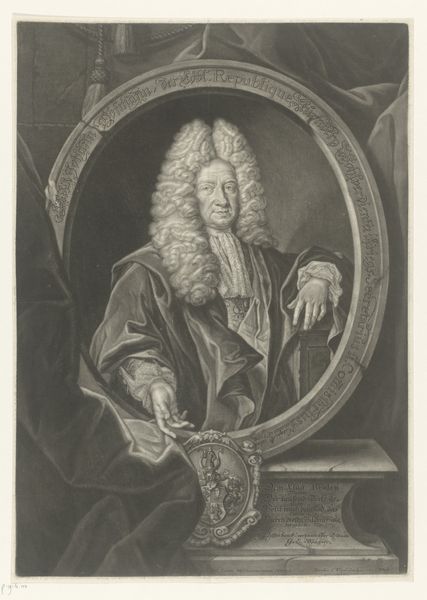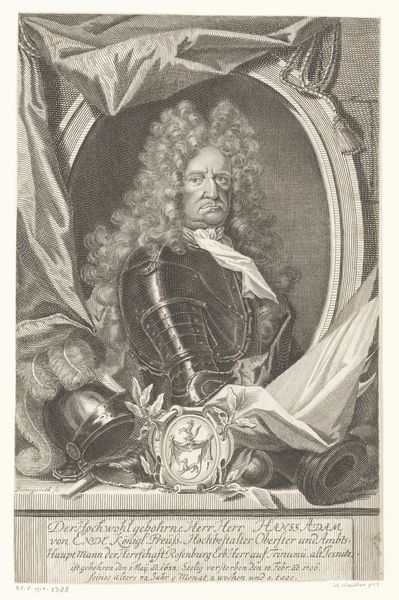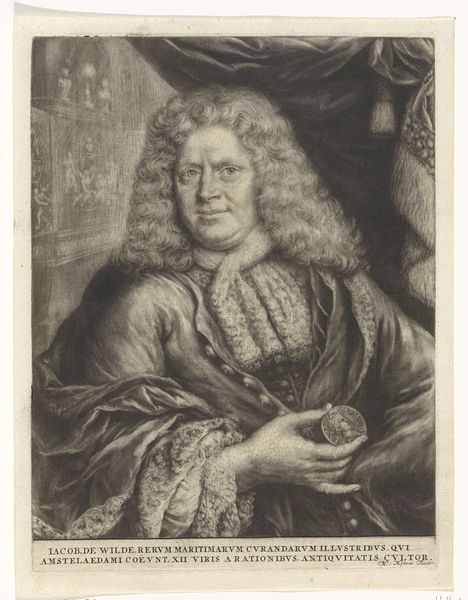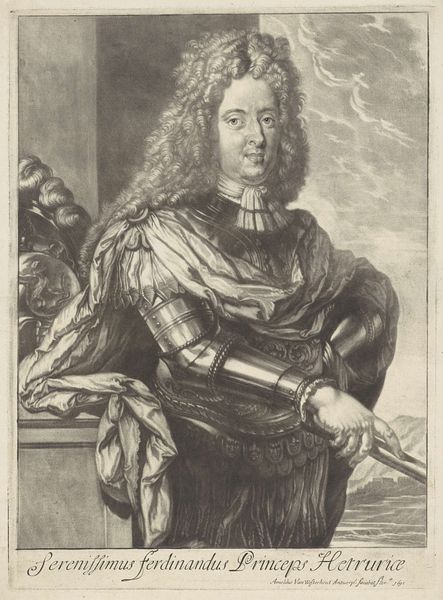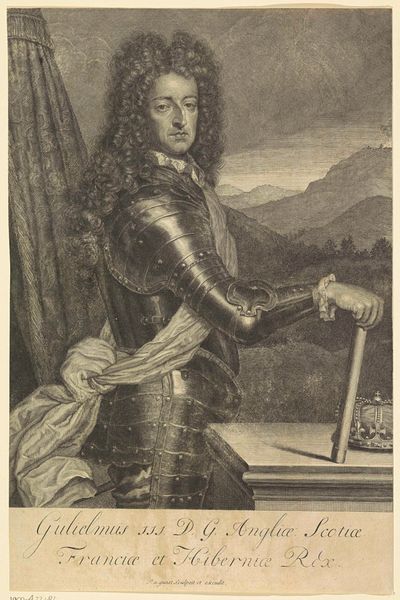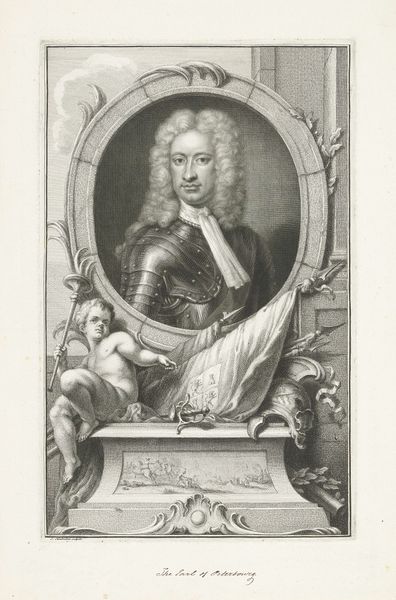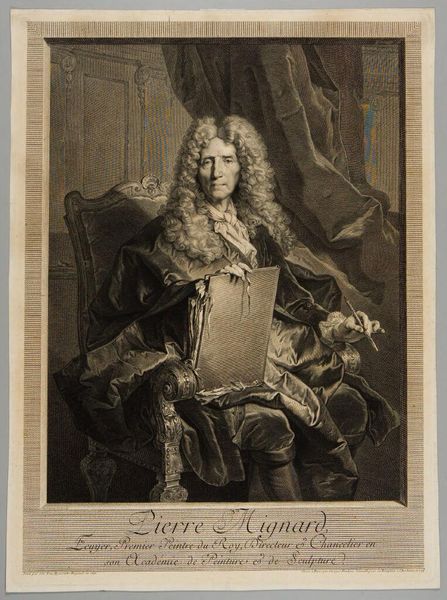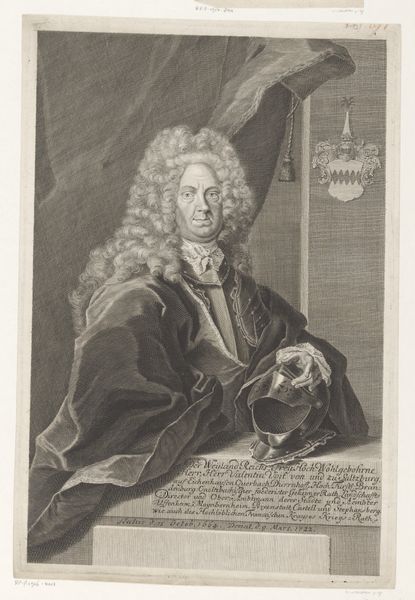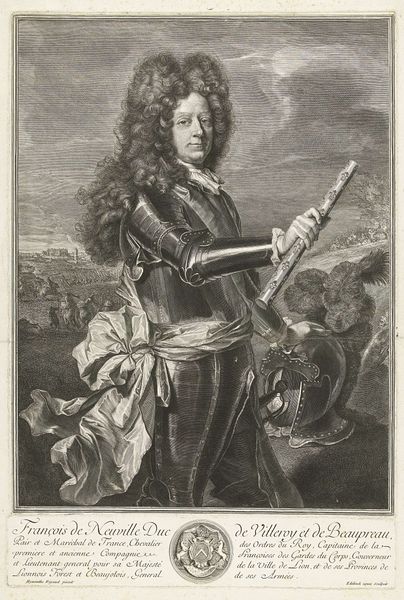
Portrait of an officer of the Leiden civic guard in front of the gate of the headquarters of the St. George guards 1673
0:00
0:00
oil-paint
#
portrait
#
baroque
#
dutch-golden-age
#
oil-paint
#
oil painting
#
portrait reference
#
underpainting
#
painting painterly
#
genre-painting
Dimensions: height 39 cm, width 32 cm, depth 5.5 cm
Copyright: Rijks Museum: Open Domain
Curator: What a compelling painting! In Domenicus van Tol’s "Portrait of an Officer of the Leiden Civic Guard," painted in 1673 using oil paint, we see more than just a likeness. The portrait sits within what appears to be an outdoor military camp or civic space, filled with subtle but intentional detail. It's almost unsettling how aware of the viewer this officer is. How do you react to its almost photographic presence? Editor: I find it interesting. The Baroque style, with its dark palette, almost creates the effect of the officer stepping out of the shadows. Knowing this work is from the Dutch Golden Age, a period of relative Dutch prosperity and artistic production, what specific social conditions contributed to the popularity and significance of portraiture like this one? Curator: Precisely! The materiality of this portrait reveals the status-driven aspirations of the sitter and society in general. This is not just oil on canvas; it's oil paint painstakingly applied, a mark of wealth. The subject isn't just anybody; it's a guard's officer of civic importance within Leiden. Dutch society was structured around guilds and civic organizations, these militias included. Think of all the materials involved in crafting just one officer’s garments: fine cloth dyed for his sash and uniform, tanned leather for gloves. Do you see how the consumption of these raw goods reflects broader trade networks and colonial endeavors of the time? Editor: It’s fascinating how the choice of materials can tell a deeper story of trade, production, and status. It's also quite clear he wanted his portrait in this precise way, almost staging it. I’m now curious, how does understanding these material aspects change our appreciation of the artwork? Curator: Well, it certainly decenters a heroic reading and shifts it towards examining a network of human relations involved in material production and distribution that portraiture attempts to mask. We move from seeing the painting as merely a beautiful artwork, to also recognize its entanglement with colonial trade routes that bring about luxury fabrics, the labor conditions, and the complex power dynamics of Dutch Golden Age society. The canvas itself, the pigments ground and mixed… everything tells a story. Editor: This new reading is eye-opening, highlighting how economic forces and human labour shape both the subject and the creation of this "Portrait of an Officer of the Leiden Civic Guard.” It reframes my appreciation, pushing past aesthetics toward production, class, and trade. Thank you for helping me view this in its expanded societal and material context.
Comments
No comments
Be the first to comment and join the conversation on the ultimate creative platform.
